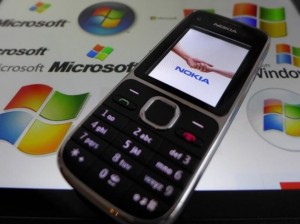 The US-based software giant Microsoft, the new owner of Nokia’s mobile devices business, will target the $50 billion affordable handset market to restore lost glory of a firm which once was the world’s largest handset maker.
The US-based software giant Microsoft, the new owner of Nokia’s mobile devices business, will target the $50 billion affordable handset market to restore lost glory of a firm which once was the world’s largest handset maker.
Before being acquired by Microsoft, Nokia had lost a considerable part of its market share to Samsung and Apple as it struggled to position itself among the fast changing needs of consumers.
Nokia had partnered Microsoft in 2011 to bring out the Lumia range of smartphones, based on Windows Phone operating
system (OS) of the Redmond-headquartered firm.
Windows Phone is already the fastest-growing ecosystem in the smartphone market and according to research firm IDC, it was the third biggest OS in fourth quarter of 2013.
“With the Nokia mobile phone business, Microsoft will target the affordable mobile devices market, a $50 billion annual opportunity, delivering the first mobile experience to the next billion people while introducing Microsoft services to new customers around the world,” it said in a statement.
Low-cost handsets (sub Rs. 5,000 category) and smartphones (especially sub Rs. 7,000) from the stables of Asian handset makers like Huawei, ZTE, Micromax and Karbonn have been driving the growth in emerging markets of Asia and Africa.
In India, the smartphone market stood at 44 million units shipped, up from 16.2 million in 2012. The overall phone market stood at close to 257 million units in 2013, up 18 percent from 218 million units in 2012, according to IDC data.
Asked if the brand name of new phones would be changed, Microsoft in an emailed reply to PTI said it has “licensed the
Nokia brand for Mobile Phones for 10 years, as well as for the purpose of marketing Nokia branded smart devices for a limited time”.
Analysts are of the view that Nokia is a big brand in India and Microsoft would want to leverage that and innovate on top of it.
“Nokia has a strong portfolio of devices across price points and of smartphones. We hope that Microsoft will continue to play across the spectrum, both high and the low-end as far as prices are concerned,” IDC Senior Market Analyst Manasi Yadav said.
They are expected to continue with the Asha range as it is very popular in India and other markets and also comes at affordable price points, she added.
“Microsoft would also continue to focus on smartphones. The prices of smartphones should come down and we could see a
Lumia device in the Rs. 6,500-10,000 range. India is a price sensitive market and it is important factor for sales,” Yadav said.
Microsoft is also expected to now aggressively market its Windows Phone platform after the completion of the deal, Gartner Principal Analyst Vishal Tripathi said.
“Microsoft has been in discussions with local OEMs for its Windows [Phone] platform. That will only get more aggressive,” he said.
However, with the Chennai plant not being a part of the deal, its efforts could be affected.
Microsoft said it will work closely with a range of hardware partners, developers, operators, distributors and retailers, providing platforms, tools, applications and services that enable them to make “exceptional” devices.
“With a deeper understanding of hardware and software working as one, the company will strengthen and grow demand
for Windows devices overall,” Microsoft added.
Source-NDTV





